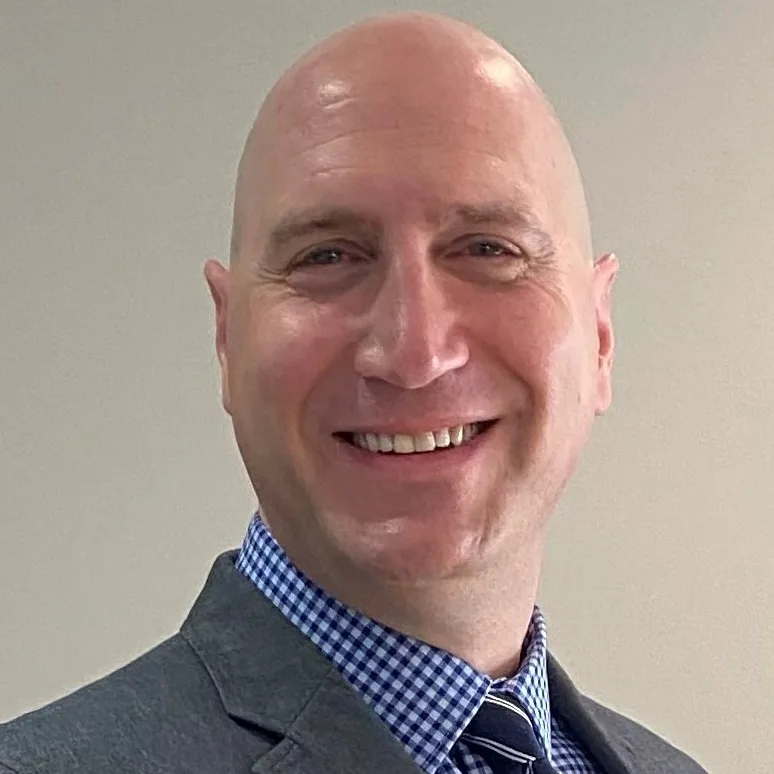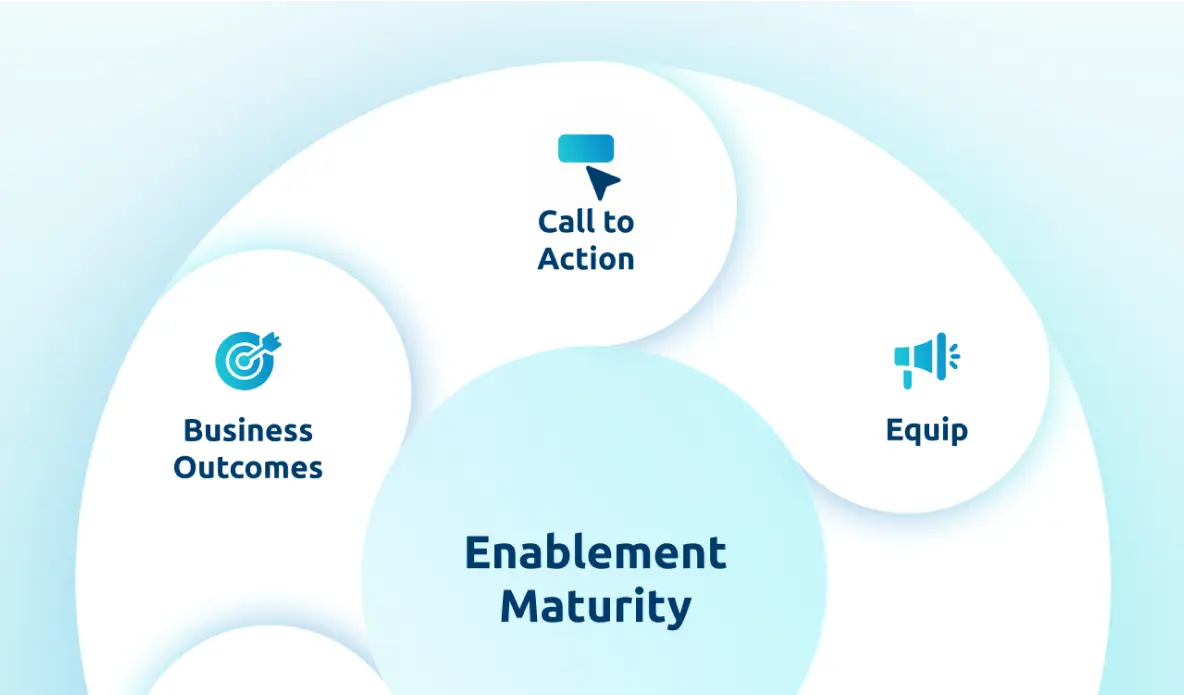Research from Sales Enablement PRO found that when sales processes and plays are structured, organizations report 19-percentage-point higher win rates. So how can you optimize the sales process through enablement?
Shawnna Sumaoang: Hi, and welcome to the Win-Win podcast. I am your host, Shawnna Sumaoang. Join us as we dive into changing trends in the workplace and how to navigate them successfully.
Here to discuss this topic is Jeff Eisenberg, the director of sales enablement at IntelePeer. Thank you for joining us, Jeff. I’d love for you to tell us about yourself, your background, and your role.
Jeff Eisenberg: Of course, Shawnna, thank you so much for having me.
Pleasure to be here. So my name is Jeff Eisenberg. I am the Director of Sales Enablement for a mid-sized SaaS company in the communications automation space. I’ve been in sales enablement for eight years across both enterprise and mid-sized companies. And before that, I sold for 12 years. So everything I do is looked at through the lens of a salesperson.
I always like to tell my sales teams that I’ll never ask them to do something that I don’t feel is beneficial to their role as I wore a sales hat for a long time.
SS: I’m sure that that helps to build a lot of rapport with your team, Jeff, and I really appreciate you taking the time to chat with us. Now, one of your key initiatives at IntelePeer is, as I mentioned in the introduction, optimizing the sales process through enablement strategies.
What challenges have you faced when it comes to streamlining sales processes in the past, and how have you overcome those challenges?
JE: Adoption is always a challenge when it comes to streamlining sales processes. I would say that to overcome them, you need several things. Number one, buy-in from your sales leadership team and other stakeholders.
They are the ones who are going to drive any initiative on the ground floor level with their team, so they need to have a voice in that process. Additionally, my CRO, my Chief Revenue Officer, always says – tell them what you’re going to tell them, tell them, and then tell them what you told them. In other words, repetition is key to success, so consistent reinforcement of any initiative.
Going to my earlier point, they need to understand the WIFM, so what’s in it for me, so it’s important for me to be viewed as that advocate for sales. If it doesn’t make sense to their role, tell them not to roll it out. We need to demonstrate how it will benefit their role. Now, lastly, a content management tool is critical to consistent reinforcement.
Now there are some pretty staggering stats that show the rapid drop in retention from any initial presentation. So that’s where a content management and LMS system play a key role. Providing the sellers with the right resources at the right time to accelerate their sales process.
SS: In your experience, what would you say are the essential building blocks for creating a sales process that really effectively helps to drive business results? And how can enablement play a key role in that?
JE: Well, that’s a great question. So first, I would recommend getting buying on the importance of a sales process. Now there are two great statistics that I often share to reinforce the importance of following a process. The first is that 70 percent of businesses with a standardized sales process are high performers and see a 28 percent increase in revenue compared to businesses without one.
The second stat, conversely, 68 percent of salespeople do not follow the sales process at all. Now that comes directly from Harvard Business Review. Now, those are pretty scary when you think about it from that perspective, but it also demonstrates a significant opportunity for any organization to drive revenue.
Now, at the end of the day, you need to go back to the beginning and either define or refine what that sales process will look like. Now a sales process is fluid, so it can change over time, but it’s essential to really lock down what that initial process is. Additionally, and this step I think is overlooked far too often, is the need to align with the buyer’s journey.
That’s more essential than ever. On one hand, technology is evolving so rapidly that many buyers don’t even know a specific product or solution exists. On the other hand, a significant majority of buyers, 70%, complete most of their research before reaching out to a sales team. Meaning they’re well into their buyer’s journey before even initiating contact with a seller.
Now, specifically, When we’re looking at the essential building blocks, it comes down to a few key measures. Number one is qualification criteria. So, we need to define who that ideal customer is at ICP. And this is not just basic measures such as industry, role, and job title. But where a prospect is in their buyer’s journey.
So are they window shoppers or actually interested? Do they have a vested interest in the solution? Or what challenges are they trying to solve for? The second measure, the deal stages. Now it’s important to define the criteria for each stage of the sales process and the necessary measures to continue to move that sales process along.
Whether it’s initial qualification, qualification of the opportunity, proposing the recommended solution, or understanding what their procurement process is. Now that’s essential for forecasting purposes. Now, then we have to look at the desired end state. Now this goes hand in hand with the deal stages.
So what is the desired end state of each stage? And then more importantly, what’s the overall desired end state? Now, obviously, the overall desired end state is closing more deals. The goal has to be defined as financial in nature and has a timeline. So, for example, if my quota is X, for this current year, do the building blocks align with that goal?
And then lastly, conversion rates. So, by knowing your conversion rates, not only across the sales org, but across each individual contributor, you can uncover the gaps and plan accordingly. To bring it all to summation, as sales enablement professionals, we need to initiate, we need to facilitate, and drive the creation of the sales process and then plug in all the necessary resources to align.
Whether that’s sales plays, SLPs or standard operating procedures, reports, training, CRM alignment, and the list goes on and on.
SS: Absolutely. And on that note, what motivated you to re-evaluate and change your enablement tech stack and how has that impacted your sales process?
JE: Great question, because when I joined the organization four years ago, content was actually shared out via MS Teams, so through chat.
So, we needed to actually scroll through multiple chat groups to find the relevant content. Obviously, this is exceedingly unorganized and inefficient. Additionally, there was a lot of outdated content that was saved on individuals’ hard drives, and that’s detrimental to our go-to-market strategy because it was rapidly evolving.
Additionally, we had Lessonly as our LMS. So my goal when researching the various content management solutions was to partner with a company that could help us organize and optimize our content, but also simplify our tech stack. And actually, I ended up moving forward, not just with Highspot’s content management tool, but also with their LMS solution.
Now, I’ll tell you, the impact has truly been a game changer for my organization. A compliment to Highspot as the tool, they’re consistently evolving it, which is great. They’re keeping up with the times. I mean, AI is critical and the new features that they’ve added are game-changers. Number two, I will say I’ve got a great customer success team behind me that’s very invested in my organization’s success.
We meet every two weeks, we have consistent agenda items, and I feel they are on the same page with me.
SS: Amazing. Well, that’s always helpful to get alignment on that front. And you’ve already achieved an impressive 93 percent recurring usage rate in Highspot. What are some of your best practices for driving the adoption of your enablement programs?
JE: Absolutely. First off, you’re speaking my language. I love when statistics are dropped, as you can tell from some of my earlier answers, I believe they add weight to any point or position you’re trying to make. I would say Garbage in, garbage out is my motto when it comes to Highspot. So it’s essential to monitor all content that is being added to Highspot and then track for adoption because it can quickly get out of control.
Buyers need to feel confident that they’re getting the right information in an efficient way or you’re quickly going to lose sponsorship. Now, we have quite a few administrators for the tool, so it’s important that everyone is on the same page in terms of What’s being added, making sure we’re swapping out old content versus just continuing to add, categorizing it correctly, creating violation rules for quality assurance, and lastly, providing a feedback mechanism for sales if the content doesn’t measure up to their expectations.
Now, I have a quarterly cadence with the other administrators where we leverage the scorecards and associated reports to identify unused or outdated content to determine the next steps. So every quarter we do a deep clean to ensure content is still relevant. Additionally, we incorporate different avenues to keep relevant content front and center.
So first, our Highspot homepage is tailored to provide multiple ways to promote content, whether it’s dedicated landing pages, or featured content. And additionally, we review new content on what we call a weekly sales huddle and then send it out to the sales organization. So in summation, this is how we ensure that content stays top of mind and sellers continue to see value. Which ties right back to the 93 percent continued utilization rate.
SS: Amazing. And to your point about helping to guide sellers, I know plays have been a key lever for you to streamline sales processes. Can you share more about your strategy for leveraging sales plays to really support your go-to-market initiatives and continue to optimize the sales process?
JE: Sure. I would say overall sales plays are great because they build the Boil it down to the most important elements of any go-to-market initiative. Sellers, need to be focused on selling. So, sales plays enable us to deploy the KISS method or keep it simple, and straightforward. Now, Highspot does a great job of providing pre-built, smart page templates broken out into know, say, show, and do, which helps break down the information into a digestible format. Ventures, easy adoption, easy utilization. Easy, fast rollout.
SS: Amazing. I love that. Now, you talked a little bit about this periodically throughout the conversation, but you mentioned the importance of having data. I’d love to understand how you incorporate data into your process of refining the sales process.
JE: Sure. Now, data is critical in all areas of sales enablement. It’s how we measure the impact of everything we do, whether it’s directly or indirectly. Data tells a story on overall effectiveness and then breaks it down into digestible elements to really understand where in the sales process we need additional resources and support.
So for example, conversion rates significantly drop somewhere along the sales process. That gives us an opportunity to see where we are not aligned with our buyers. Is it messaging, pricing, or lack of qualification? Then those adjustments can be made accordingly. Now, we also measure the usage of the associated tech stack to really understand what’s being leveraged, where it’s being leveraged, and the value.
Now, with newer sellers where the conversion rate can be premature, tech stack adoption is a great measure to ensure that the seller is really pulling all the necessary levers to be successful. Now, this provides sales leaders with an opportunity for understanding and then early intervention if necessary.
So, for example, um, the pitching feature in Highspot is great because it provides visibility to open and view rates of our content. Now, that’s a great indication of buyer interest level and where the level of interest lies. Now, if pitch utilization is low, we can then determine whether it’s a training issue, an adoption issue or otherwise.
SS: I love the way that you’re thinking about the optimization process and with your focus on optimizing the sales process, what specific improvements or results have you seen? And how has having a unified enablement platform contributed to those achievements? That’s
JE: a great question. So yes, of course, we measure everything we do to determine the effectiveness. I can honestly say that improvements and results have been widespread across the organization. So number one, onboarding has drastically improved with using Highspot as our single source solution for content management and learning development. We have shortened our time to proficiency window significantly.
We’ve decreased our time to the first deal. We’ve increased our funnel and reduced turnover. Now, from a seasoned seller perspective, we’ve seen a drastic improvement in the sales cycle, but also in deal size. So, in other words, we’re closing larger deals, and we’re closing them faster. And then lastly, I would say time optimization. Now, Highspot has enabled us to give back one of the most important resources available, and that’s time.
SS: Yes, time often is equated to productivity. And so if you can give that back to your reps so they can focus on revenue, I think every business would want to know.
JE: I always like to tell my sellers that at the end of the day, when you talk about revenue, I work for them. Sales enablement works for them. Because at the end of the day, they’re the ones bringing the revenue. So, that’s the way I always like to view the sales enablement role. Because at the end of the day, we need to support sales. They’re the ones signing our paychecks in a roundabout sort of way.
SS: Absolutely. Thank you so much for joining us. I have one last question. If you could summarize maybe one crucial lesson learned from your experience in improving your sales process, what would it be?
JE: It’s a great question. I would say seek to understand before being understood. Make sure you’re including all the stakeholders, not just sales, to get a baseline before collaborating on changes or improvements.
This maximizes your chance for success.
SS: I think that is fantastic advice, Jeff. Thank you again so much for joining us.
JE: You’re most welcome. Thank you for your time.
SS: To our audience, thank you for listening to this episode of the Win-Win Podcast. Be sure to tune in next time for more insights on how you can maximize enablement success with Highspot.




